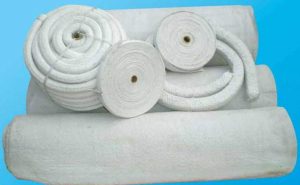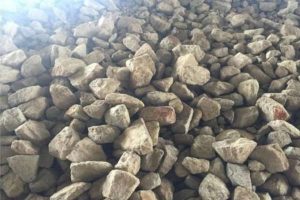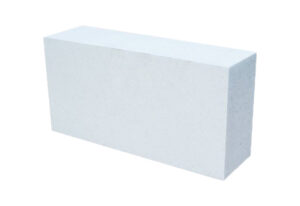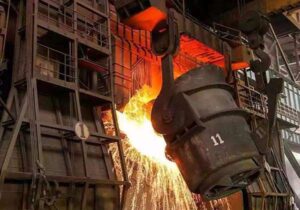I mattoni sinterizzati non sono solo durevoli, ma forniscono anche riparo alle persone. Un buon ambiente di vita e di lavoro. È apprezzato per la sua cura degli esseri umani e il suo grande contributo alla società.
Oggi, negli Stati Uniti, il più grande paese sviluppato del mondo, i mattoni sinterizzati occupano ancora la metà dei materiali delle pareti. In molti paesi europei, il mattone sinterizzato è considerato un materiale da costruzione di lusso. Nei paesi sviluppati, 1M3 di mattoni sinterizzati (equivalente al nostro mattoni pieni ordinari sinterizzati 684 pezzi) può essere scambiato con 2.5 ~ 3,5 t di cemento, che i poveri non possono permettersi di utilizzare.
Negli Stati Uniti, nello stesso posto ci sono due edifici. Struttura. Stile. La decorazione della stessa casa di campagna. Il mattone che il cemento è molto più costoso, nei paesi sviluppati i ricchi vivono in cottage di mattoni, e i poveri vivono solo in grattacieli di cemento.
Lo ha detto una volta un'autorità competente dell'Associazione europea delle costruzioni: Ora ci sono molti cosiddetti nuovi materiali per pareti nel mondo, che cercano disperatamente di imitare le prestazioni dei mattoni sinterizzati. Tuttavia, possono imitare solo una o più proprietà del mattone sinterizzato ma non tutte le proprietà del mattone sinterizzato, in questo senso, si può dire che il mattone sinterizzato è il protagonista del decathlon nei materiali da parete.
La NASA, nel suo rapporto pubblicato sulla Luna, ha sottolineato più chiaramente che in futuro costruirà un rifugio umano sulla Luna, l'unico materiale disponibile è il mattone sinterizzato.
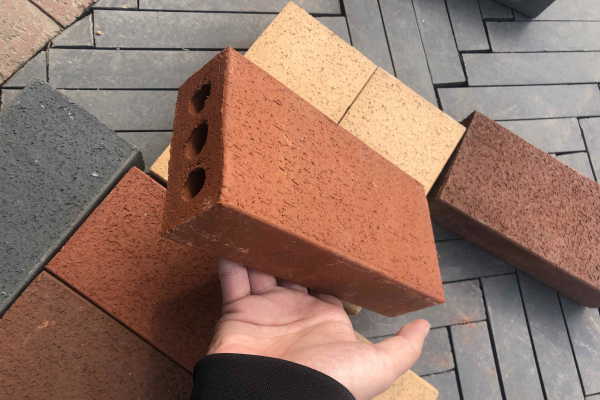
Tutto ciò è dovuto alle numerose proprietà perfette dei mattoni sinterizzati.
1. prestazione di tenuta: grande quanto la Grande Muraglia Cinese che un tempo bloccava gli Unni del nord, piccolo come un breve pezzo di muro per distinguere l'interno dall'esterno. Tutti svolgono un ruolo di isolamento e una certa dose di chiusura.
2. funzione portante: Gli attuali standard di qualità dei mattoni sinterizzati cinesi prevedono una resistenza alla compressione dei mattoni portanti pari ad un minimo di 10 MPa, Infatti, già negli anni '60 nella provincia del Sichuan, ha prodotto la fabbrica di mattoni della ganga 60 MPa (poi chiamato 600) sopra il mattone sinterizzato. Dopo quasi mille anni di vicissitudini, sofferenza da parte dei militari. Anche la torre in mattoni del tempio Kaiyuan, alta 84 metri, la pagoda della grande oca selvatica di Xi'an e altri edifici alti hanno dimostrato la forte capacità portante dei mattoni sinterizzati.
3. Durabilità: La fabbrica di mattoni Vienna Hill in Austria garantisce orgogliosamente e apertamente al mondo che la durata dei mattoni sinterizzati che produce è 200 anni, mentre è ormai da tempo dimostrato che i mattoni verdi sinterizzati prodotti in Cina hanno raggiunto mille anni di immortalità! In tutto il mondo attualmente conservati con più di centinaia di anni di storia di antichi edifici sono in mattoni o pietra.
4. prestazione ignifuga: il mattone sinterizzato viene sinterizzato ad una temperatura elevata di circa 1000 ℃, il fuoco generale non può farne a meno, pertanto l'Amministrazione Generale dei Vigili del Fuoco del Ministero della Pubblica Sicurezza lo ha identificato come materiale da costruzione ignifugo di classe A.
5. prestazione impermeabile: l'impermeabilizzazione delle tegole è nota a tutti. La tegola è un membro della famiglia dei mattoni sinterizzati, il mattone sinterizzato ha anche una certa funzione impermeabile e molte piscine. Forno. Le piccole dighe ne sono la prova. 6.
6. resistenza agli agenti atmosferici: mattone sinterizzato in ± 100 ℃ può ancora mantenere la sua forza e altre proprietà importanti rimangono invariate, quindi la NASA ci crede “Nel futuro per costruire un rifugio umano sulla Luna l'unico materiale disponibile è il mattone sinterizzato.
7. stabilità: i mattoni sinterizzati non hanno ritiro né a secco né a umido. Anche il coefficiente di dilatazione termica è molto piccolo e non viene piegato anziché rotto, non ci sono stress e deformazioni esterne.
8. prestazioni di isolamento termico: è noto che una casa con il tetto in tegole di cemento è più calda d’estate e più fredda d’inverno rispetto ad una casa con tegole sinterizzate (piccola piastrella verde o piastrella piatta) tetto. Questo perché il calcestruzzo ordinario trasferisce l'energia termica più velocemente. Le misurazioni effettive mostrano che la capacità di trasferimento del calore dei mattoni pieni ordinari sinterizzati è pari a solo 60% a 70% di quello del calcestruzzo ordinario. So sintered bricks are much better than ordinary concrete in terms of insulation performance.
9. sound insulation performance: sintered brick body in the extremely small microporous and pore wall on the sound wave transmission constitutes a great resistance, weakening and absorbing the sound and its energy. The actual measurement proves that the sound insulation capacity of 240mm thick ordinary solid brick wall is 51.2 decibels, which creates a relatively quiet small environment.
10. Breathing function: There are countless micro-pores in sintered bricks, which absorb moisture in the air when the air humidity is high and make people less stuffy, while they slowly release this moisture when the air is relatively very dry, thus reducing people’s hot and dry feeling.
11. decorative function: che si tratti del muro rosso della Città Proibita di Pechino o dei mattoni delle antiche abitazioni della città, tutti danno alle persone il piacere di ritornare alla bellezza della natura, e i colorati mattoni e piastrelle smaltati ci regalano un mondo di fiori. Anche i guerrieri e i cavalli di terracotta scavati dalla tomba di Qin Shi Huang sono prodotti di argilla sinterizzata!
12. flessibilità: può essere costruito secondo la ricca immaginazione degli architetti di vari modelli di padiglioni e padiglioni. Tetto. Terra. Torre. Castello, formando il mondo immaginario dei fiori.
Purtroppo, molte persone che vivono nel settore del mattone sinterizzato non hanno ancora familiarità con queste eccellenti proprietà del mattone sinterizzato, il che è probabilmente “senza conoscere il vero volto della montagna, solo per essere su questa montagna”!
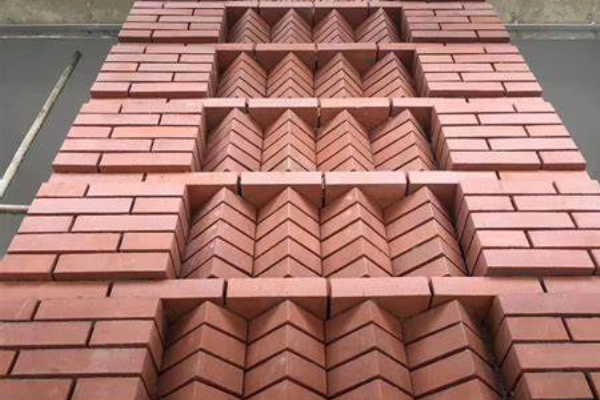
Compared with sintered ordinary solid bricks, sintered porous bricks. Hollow Brick has better technical performance.
1. better seismic performance: according to statistics, In 1975 the country’s porous bricks. Hollow brick production has 1.3 billion pieces, accounting for 2.2% of the brick production. IL 1976 Tangshan earthquake also shattered the hollow brick, a 1985 the national hollow brick production fell to 890 million pieces, only 0.3% of the brick production that year. By 1997 the production of hollow bricks rose to 10 billion, but because the production of solid bricks grew faster, the production of hollow bricks was still only 1.62% of the total number of bricks.
Porous bricks. Are hollow bricks not earthquake resistant? It is better to let the scientific experimental data speak for themselves.
The seismic research institute of the Chinese Academy of Building Research and the Northwest China Building Design Institute’s actual measurement data show that: under the same conditions porous brick through-joint shear strength than solid brick 18.4% higher, shear cracking load and ultimate bearing capacity by 17% e 19% respectively. When masonry with structural columns are even higher 19% e 26% respectively.
In residential construction, the weight of the wall is often more than half of the total weight of the building, porous (vuoto) bricks are much lighter than solid bricks, and the weight of the building is reduced, and the earthquake stress is also reduced. Measurements show that when the self-weight of the building is reduced by about 20%, the horizontal seismic stress is reduced by about 15%.
Porous Bricks. Better Seismic Resistance Of Hollow Bricks Can Be Achieved By:
1.1 Hollow blocks are largely lighter than ordinary solid blocks. Large block, then good stability, masonry mortar joints less, weak links are also less. Light, the seismic stresses generated by the body are correspondingly reduced.
Hollow brick surface grooves and porous brick holes and dents not only increase the contact area with the masonry mortar. And the mortar squeezed into the holes and dents during masonry forms a pin bond after solidification, which enhances the bond strength of mortar and brick and the overall seismic performance of the masonry.
1.2 Need to know that bricks are not used individually, but thousands of pieces are united to form a strong and long-lived building, which relies on cement mortar bonding material between them to form a wall with a certain strength. Here, the bonding performance and construction quality of cement mortar and other bonding materials (mortar fullness and its bond strength with bricks) play a crucial role.
No wonder it has been said, “Bad quality sintered bricks certainly do not build good quality buildings, and extremely good quality sintered bricks do not necessarily build good quality buildings.” Because steel bricks that are not well fixed together are also easy to push down.
Sintered porous and hollow bricks are larger than ordinary solid bricks, and the masonry has fewer mortar joints and fewer weak links in the wall, so it is much stronger.
When using ordinary solid bricks for a 1m high wall there are 16.6 horizontal mortar joints. But when using KP1 porous brick with the shape size of 240×115×90mm, there are only 10 articolazioni. With 40% fewer mortar joints, the weak link is reduced, and the seismic performance of the wall is higher. If the use of not KP1 porous brick but the shape size of 240 × 190 × 240mm large sintered porous brick, not only the horizontal gray joints only 5, and vertical gray joints are also reduced, the seismic capacity of the wall is higher. (Note: Attualmente, there are already domestic sintered porous hollow blocks with a shape size of 365~490mm)
2. Improvement Of Construction Performance:
2.1 improve building construction work efficiency, when using sintered ordinary solid bricks, bricklayers have to use 684 bricks with a total weight of about 1700kg to complete 1M3 of masonry (in actual construction, minus cement mortar needs about 530 ~ 550 pezzi / m3).
And when using kp1 type porous brick only need to use 402 pieces of total weight 1200 ~ 1300kg (not deducted cement mortar, the same below), when using the shape size of 240 × 190 × 240mm hollow brick, as long as 193 pieces of the total weight of about 800kg brick, no wonder in the city’s hollow brick Xichang City construction site brickworks first ask what is used “brick” too.
2.2 reduce project cost: as mentioned before when using ordinary solid brick, every 1m high masonry has 16.6 horizontal gray joints, using kp1 type porous brick only 10 gray joints.
And when using hollow bricks with external dimensions of 240×190×240mm, there are only 5 horizontal mortar joints, and the cement mortar required for each 1m3 of masonry is 0.2m3. 0.12m3 and about 0.06m3 respectively.
2.3 Since the capacity of ordinary solid brick is 1700kg/m3, kp1 type porous brick is about 1200kg/m3 and hollow brick is 800kg/m3 or lower, the transport weight and cost of materials are also significantly reduced.
2.4 In civil buildings the weight of the wall is about half of the total weight of the building, the capacity weight of masonry brick is reduced, the burden of the foundation is also reduced, and the bearing capacity of beams and columns for structure is also reduced. So when porous brick or hollow brick is used as the main material of the wall, not only the cost of the foundation decreases, but also the amount of steel is similarly reduced.
The information from Liangshan State Design Institute shows that: when using hollow bricks with a hole rate of about 50% instead of ordinary solid bricks for filling walls, each m2 of floor space, can save 5.5kg of steel used in beams or columns. equivalent to saving all the steel needed for floors and roofs.
3. Better Insulation Performance
It is well known that still, the air is a good thermal insulation material. New cotton wool retains essentially still air in the countless voids made up of cotton fibers, so it can keep heat.
With old “old lint”, the gaps in the cotton fibers are tightened and the “still air” is gone, so it is “not warm”.
The knotted porous brick or hollow brick with its crisscrossing ribs and walls cleverly arranged to form a certain strength of the brick and its mutual separation of the hole. Seams to store the basic static air, to heat insulation, two birds with one stone.
It should be noted that the insulation performance of the wall is often worse than the insulation performance of the brick. This is because the large number of mortar joints in the wall provides a fast path for heat flow transfer (thermal bridge). So as much as possible increasing the shape of the brick size, and reducing the masonry gray joints, is an effective means to improve the thermal insulation performance of the wall.
The current use of external insulation. Internal insulation and other measures not only increase the cost of construction and its service life is much lower than the building itself, self-insulating brick not only does not require additional investment and can and the building itself with life and death and common fate.
4. Better Sound Insulation Effect
The actual measurement shows that the sound insulation capacity of 240mm thick ordinary solid brick wall is 51.2 dB while the sound insulation capacity of 190mm thick round hole porous brick wall reaches 46~54 db.
PER Refractories Company si trova nella città di Xinmi, Provincia di Henan, la città natale di materiali refrattari in Cina. La nostra azienda è un'impresa refrattaria basata sulla tecnologia che integra R&D, produzione, saldi, e servizio tecnico. Le ricche risorse e l'eccellente qualità del territorio forniscono condizioni superiori senza pari per la produzione di materiali refrattari. I nostri prodotti principali sono mattoni di argilla refrattaria, high alumina fire bricks, mattoni refrattari di silice, mattoni refrattari al magnesio, mattoni di mullite, mattoni isolanti, e altri prodotti resistenti alle alte temperature.

